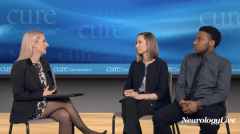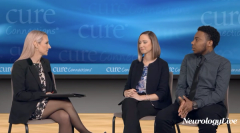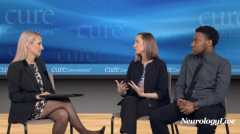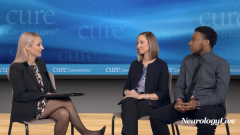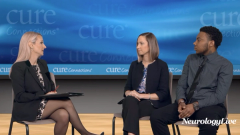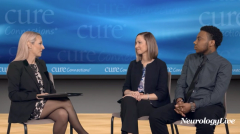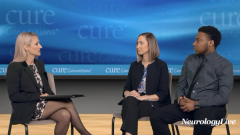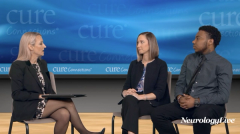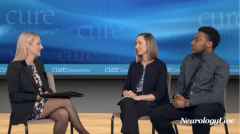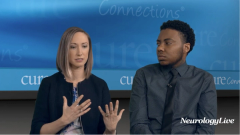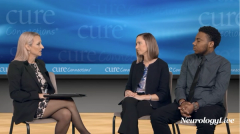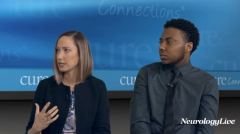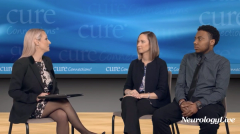
Typical SMA Presentation Upon Diagnosis
Episodes in this series

Crystal Proud, MD: Spinal muscular dystrophy can equally affect girls and boys and does not have any predilection for certain ethnic groups.
Philippa Cheetham, MBChB, MRCS, MD, FRCS: So, you’ve already talked about how there’s a huge spectrum. We know that with this disease, the younger the child presents, usually the more severe the disorder. Can you tell us a little bit about the spectrum of spinal muscular atrophy?
Crystal Proud, MD: Yes. So, we used to actually characterize people in terms of types. And we don’t so much utilize those types anymore. But historically, they were able to allow us to do a couple of days. They were able to allow us to provide prognosis to families so that they could prepare. And they allowed us to be able to characterize patients so that we could put them into opportunities for research because you want to obviously intervene with groups who are similar, and then look at outcomes. So historically, there were types I, II, and III that are the most commonly referred to types. And genetically, they are the same. Phenotypically, they are different, and I think the one that you’re referring to that it’s most commonly recognized is the type 1 babies that without treatment would essentially pass away definitively before the age of 2.
Philippa Cheetham, MBChB, MRCS, MD, FRCS: Before we bring Sebastian into our discussions, can you tell me a little bit about how patients present to you? Obviously, parents can jump on the internet and read these huge lists of signs and symptoms. Do you get patients that are referred to you with a suspected diagnosis that turned out not to have spinal muscular atrophy and they have a whole load of potential other issues? Or for most people that you see, is the diagnosis pretty obvious that it’s already being missed by a number of months or years already? How do people present to you?
Crystal Proud, MD: It’s kind of a mixed bag, to be honest. So in infants who are floppy and weak, with a poor cry, and minimal movement of their arms and legs, I think that by the time they see me, their pediatrician has recognized that there is something that is very worrisome here. And there is this significant disconnect where the brains of our patients with spinal muscular atrophy are very much intact and so, I have these bright-eyed young children that are cognitively and socially very on track.
And their bodies cannot keep up with them because this is affecting their motor nerves. And so there’s this disconnect there. And when I see that disconnect, it becomes very obvious that this is what we’re dealing with. That obviousness becomes less, so when you have older patients, and Sebastian will share his journey with us, but it can often go underrecognized in patients who have achieved the ability to sit on their own and stand on their own but may have a difference in the way that they accomplish those tasks.
And so that could indicate a number of different considerations for diagnosis that I also evaluate for. Is there a difference in the brain signals? Is this a CNS [central nervous system] problem? Is this a congenital myopathy? Is it a neuromuscular junction problem? And so the differential can be a little broader for our patients who are older.
Philippa Cheetham, MBChB, MRCS, MD, FRCS: So for patients who come to you we hear a lot now about concerns with immunizations. There’s been a huge amount over the past 25 years written about autism and other medical problems like cerebral palsy. Do you find these kinds of diagnoses in the differential for patients that come to you? Or, is it completely a different set of symptoms?
Crystal Proud, MD: It’s a completely different set of symptoms except to a neurologist. So, to a primary care person, they may see that someone is just not keeping up. In the questioner’s mind maybe, we’re dealing with cerebral palsy. And so that is where that referral to a neurologist really is incredibly helpful because we can parse out what is upper motor neuron dysfunction, which would be seen in cerebral palsy, and what is lower motor neuron dysfunction, which is seen in the peripheral nervous system, which is my area of expertise.
Philippa Cheetham, MBChB, MRCS, MD, FRCS: And you talked about the effect on the nerves, the muscles. Is there a discrepancy between the upper limb? Do you find that certain muscles are more obviously affected or is this a sort of generic across-the-board any muscle can be affected?
Crystal Proud, MD: So it’s important to keep in mind that any muscle can be affected. And I think that the most important thing to recognize is that it’s also not just muscles of the arms and legs but also the respiratory muscles as well. And so, we have ways of measuring their strength over time because it plays a huge role in the health of our patients. But if we’re purely looking at a physical examination, there does tend to also be a pattern whereby the lower limbs tend to be more significantly impacted than the upper limbs.
Philippa Cheetham, MBChB, MRCS, MD, FRCS: So obviously walking and I guess when patients are slow to crawl will go from sitting to standing, that’s when you see the issues.
Newsletter
Keep your finger on the pulse of neurology—subscribe to NeurologyLive for expert interviews, new data, and breakthrough treatment updates.

